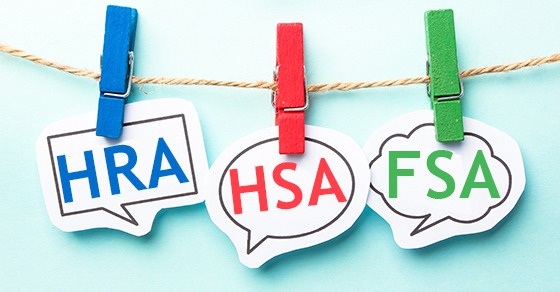HRA HSA FSA Comparison: Which Should You Include In Your Benefits Package?

On October 12, there was a signing of an executive order that, among other things, seeks to expand Health Reimbursement Arrangements (HRAs). HRAs are just one type of tax-advantaged account you can provide your employees to help fund their health care expenses. Also available are Health Savings Accounts (HSAs) and Flexible Spending Accounts (FSAs). Which one should you include in your employee benefits package? Here’s HRA HSA FSA comparison, looking at the similarities and differences:
HRA
Of the employer provided health benefits, an HRA reimburses employees for medical expenses. HRAs exclude contributions from taxable income and there’s no government-set limit on their annual amount. But only you as the employer can contribute to an HRA; employees can’t contribute.
Also, the Affordable Care Act puts some limits on how HRAs can be offered. The October 12 executive order directs the Secretaries of the Treasury, Labor, and Health and Human Services to consider proposing regs or revising guidance to “increase the usability of HRAs,” expand the ability of employers to offer HRAs to their employees, and “allow HRAs to be used in conjunction with non-group coverage.”
HSA
If you provide employees a qualified high-deductible health plan (HDHP), you can also sponsor Health Savings Accounts for them. Both you and the employee can make pre-tax contributions. The 2017 contribution limits (employer and employee combined) are $3,400 for self-only coverage and $6,750 for family coverage. The 2018 limits are $3,450 and $6,900, respectively. Plus, for employees age 55 or older, they can contribute an additional $1,000.
The employee owns the account, which can bear interest or have an investment, growing tax-deferment similar to an IRA. Withdrawals for qualified medical expenses are tax-free, and employees can carry over a balance from year to year.
FSA
Regardless of whether you provide an HDHP, you can sponsor Flexible Spending Accounts that allow employees to redirect pretax income up to a limit you set. This limit is not to exceed $2,600 in 2017 and expected to remain the same for 2018. You, as the employer, can make additional contributions, generally either by matching employer contributions up to 100% or by contributing up to $500. The plan pays or reimburses employees for qualified medical expenses.
What employees don’t use by the plan year’s end, they generally lose — though you can choose to have your plan allow employees to roll over up to $500 to the next year or give them a 2 1/2-month grace period to incur expenses to use up the previous year’s contribution. If employees have an HSA, than they must limit their FSA to funding certain “permitting” expenses.
If you’d like to offer your employees a tax-advantaged way to fund health care costs but are unsure which type of account is best for your business and your employees, please contact us. We can provide you the additional details in our HRA HSA FSA comparison to make a sound decision.
